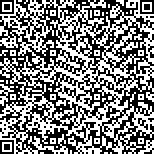| 本文已被:浏览 2390次 下载 1778次 |

码上扫一扫! |
|
|
| 热带西太平洋Y3和M2海山微食物网主要类群生态分布与比较 |
|
赵丽1,2, 赵燕楚1,3, 王超锋1,3, 张武昌1,2, 孙晓霞2,4, 李学刚1,2, 赵苑1,2, 肖天1,2
|
|
1.中国科学院海洋生态与环境科学重点实验室(中国科学院海洋研究所) 青岛 266071;2.青岛海洋科学与技术国家实验室 海洋生态与环境科学功能实验室 青岛 266071;3.中国科学院大学 北京 100049;4.中国科学院海洋研究所 山东胶州湾海洋生态系统国家野外科学观测研究站 青岛 266071
|
|
| 摘要: |
| 2014年12月和2016年3月分别对热带西太平洋Y3海山(中层海山)和M2海山(浅海山)微食物网主要类群(包括聚球藻、原绿球藻、微微型真核浮游生物、异养细菌和浮游纤毛虫)丰度和生物量垂直分布进行了研究。结果表明,Y3和M2海山水文环境比较相似但略有区别,叶绿素最大值层(DCM)分别在75—100m和110m水层,微食物网各主要类群在垂直尺度上的分布与叶绿素a浓度紧密相关。其中浮游纤毛虫呈现“双峰型”模式,即丰度高值出现在表层和DCM层;原绿球藻和微微型真核浮游生物呈现“单峰型”模式,丰度高值出现在DCM层;聚球藻和异养细菌峰型相对不显著,DCM层以浅丰度较高,DCM层以深丰度明显降低。分析其原因,可能是受到温度、光照和营养盐的共同影响。Y3和M2海山微食物网结构的垂直变化不完全一致。其中,Y3海山30m以浅和150m以深异养细菌生物量占绝对优势,75—100m水层自养型生物(原绿球藻和微微型真核浮游生物)占绝对优势;M2海山75m以浅和200m以深异养细菌占绝对优势,110—150m自养型生物占绝对优势。M2海山自养型生物占优势的水层要明显深于Y3海山,可能与它们的海山类型和采样季节不同有关。 |
| 关键词: 微食物网 微微型浮游生物 浮游纤毛虫 海山 |
| DOI:10.11693/hyhz20170600160 |
| 分类号:Q938.1 |
| 基金项目:中国科学院战略性先导科技专项(A类),XDA11030202号;国家自然科学基金委员会-山东省人民政府海洋科学研究中心联合资助项目,U1606404号。 |
|
| COMPARISON IN THE DISTRIBUTION OF MICROBIAL FOOD WEB COMPONENTS IN THE Y3 AND M2 SEAMOUNTS IN THE TROPICAL WESTERN PACIFIC |
|
ZHAO Li1,2, ZHAO Yan-Chu1,3, WANG Chao-Feng1,3, ZHANG Wu-Chang1,2, SUN Xiao-Xia2,4, LI Xue-Gang1,2, ZHAO Yuan1,2, XIAO Tian1,2
|
|
1.CAS Key Laboratory of Marine Ecology and Environmental Sciences, Institute of Oceanology, Chinese Academy of Sciences, Qingdao 266071, China;2.Laboratory for Marine Ecology and Environmental Sciences, Qingdao National Laboratory for Marine Science and Technology, Qingdao 266071, China;3.University of Chinese Academy of Sciences, Beijing 100049, China;4.Jiaozhou Bay Marine Ecosystem Research Station, Institute of Oceanology, Chinese Academy of Sciences, Qingdao 266071, China
|
| Abstract: |
| Abundance and biomass of microbial food web components, including Synechococcus, Prochlorococcus, picoeukaryotes, heterotrophic bacteria, and planktonic ciliate, were investigated in the Y3 and M2 seamounts of the tropical Western Pacific in December 2014 and March 2016, respectively. The vertical distribution of planktonic ciliate showed “bimodal” pattern, showing high abundance at the surface and the deep chlorophyll maximum (DCM) layer. Prochlorococcus and picoeukaryotes exhibited “unimodal” pattern with a maximum abundance in the DCM layer. No significant peak was observed in vertical distributions of Synechococcus and heterotrophic bacteria abundance. Temperature, light availability, and nutrient supply were responsible for the distribution patterns of the microbial food web components in the seamounts. In addition, the vertical distribution of microbial food web structure was different between Y3 and M2 seamounts. In the Y3 seamount, heterotrophic bacteria biomass was dominant in the layers above 30m and below 150m, whereas Prochlorococcus and picoeukaryotes were dominant between 75m and 100m. In the M2 seamount, heterotrophic bacteria were dominant in the upper 75m layer and below 200m. Prochlorococcus and picoeukaryotes were dominant in layers between 110m and 150m. The differences may be related to the types of the two seamounts and sampling seasons. |
| Key words: microbial food web picoplankton planktonic ciliate seamounts |
